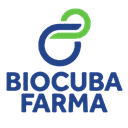Executive Secretary

VIII Simposio Internacional de Química y Ciencias Farmacéuticas
STA
V Simposio Internacional “Seguridad Tecnológica y Ambiental”
Resumen
• Problemática: La planta Jatropha curcas presenta potencial para ser usada como materia prima en el sector industrial y agrícola para la obtención de biodiesel. El aceite de la Jatropha curcas y sus derivados han sido productos de especial interés debido a sus numerosas aplicaciones, este contiene cantidades de esteres de forbol.
• Objetivo(s): Elegir los modelos a utilizar para determinar la ecotoxicidad del aceite de Jatropha curcas y sus derivados.
• Metodología: Las pruebas de toxicidad son herramientas necesarias en la determinación del efecto nocivo de distintos compuestos químicos sobre el medio ambiente y sus recursos naturales. Las pruebas de ecotoxicidad son métodos generalmente rápidos que requieren de mínimos recursos instrumentales para cuantificar respuestas biológicas y la magnitud del efecto de un agente o condición especifica en seres vivos y con mayor énfasis en poblaciones, comunidades y ecosistemas. Se llevó a cabo una revisión de literatura sobre los principales métodos de determinación de ecotoxicidad, así como los modelos biológicos empleados.
• Resultados y discusión: Los principales bioindicadores utilizados por el compendio de autores fueron lactuca sativa y artemia debido a su fácil manejo y bajo costos.
• Conclusiones: El uso de modelos biológicos para determinar la ecotoxicidad de una sustancia es variado, demostrando que estos modelos son de innegable importancia y se recomienda realizar el estudio de ecotoxicidad en una batería de ensayos.
Abstract
• Problematic: The Jatropha curcas plant has the potential to be used as a raw material in the industrial and agricultural sector to obtain biodiesel. Jatropha curcas oil and its derivatives have been products of special interest due to their numerous applications, it contains amounts of phorbol esters.
• Objective (s): Choosing the models to use to determine the level of ecotoxicity of Jatropha curcas oil and its derivatives.
• Methods: Toxicity tests are necessary tools in determining the harmful effect of different chemical compounds on the environment and its natural resources. The ecotoxicity tests are generally rapid methods that require minimal instrumental resouces to quantify biological responses and the magnitude of the effect of a specific agent or condition in living beings and with greater emphasis on populations, communities and ecosystems. A literature review was carried out on the main ecotoxicity determination methods, as well as the biological models used.
• Results and Discussion: The main bioindicators used by the compendium of authors were Lactuca sativa and brine shrimp due to its easy handling and low costs.
• Conclusions: The use biological models to determine the ecotoxicity of a substance is varied, demonstrating that these models are of undeniable importance and it is recommended to carry out the ecotoxicity study in a battery of trials.
Sobre el ponente

Carmen Gloria Dean Galán

Discussion




